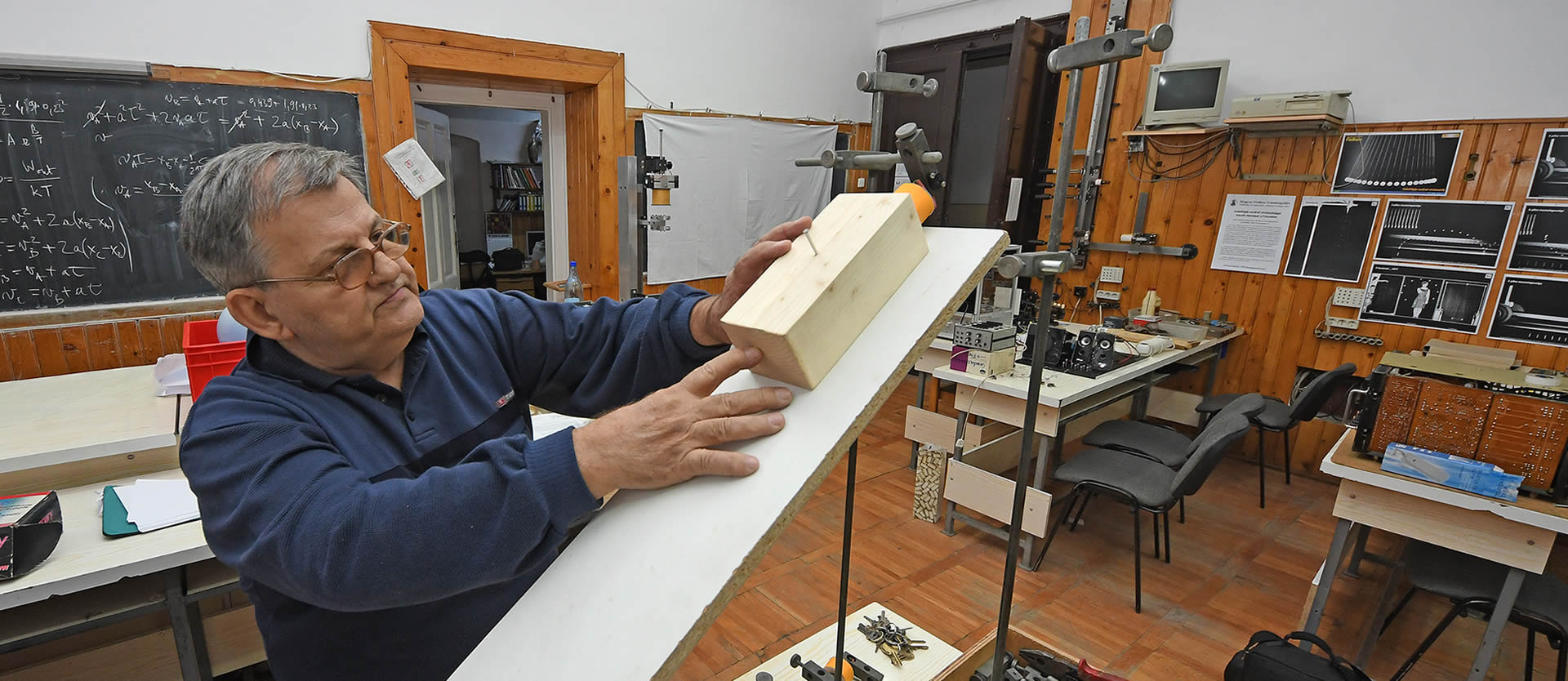„Such is physics – you observe and learn“

The heavy, wooden front doors of the Ady Endre high school in the Romanian Oradea are creaking. One certainly needs some strength to open them. István Bartos opened these doors countless times. For more than 20 years he worked as physics teacher at the school. The 244 years old building is directly located in the city center, behind the state theatre. Right next is the pedestrian zone with its cozy coffee shops and small boutiques.
Even after his retirement István Bartos still can’t let go of the high school and physics. He is still closely connected with the school. The bust of Ady Endre, that poet who is a true celebrity in Hungary as well as in the Hungarian characterized Oradea and after whom the school is named, still welcomes him in the entrance hall.
István Bartos is in a good mood. The previous day a physics competition that he successfully organized has taken place. More than 50 pupils arrived to address themself to the tasks that Bartos cooked up more than three months beforehand. On the very same evening the grand award ceremony was scheduled, including presentations from especially invited, renowned scientists. This year István Bartos welcomed a new guest, Prof. Ferenc Krausz from Munich. The ultra-short-term physicist from the Max Planck Institute of Quantum Optics presented attosecond physics to the students and teachers. That research field that allows researchers, with the help of laser technology, to gain a deep insight into the microcosm and explore the habits of electrons.
Now, the day after the competition, Krausz and his host sit cozily together in the venerable physics room of the high school. Here, Bartos has taught, here he feels comfortable. On the wood paneled walls pictures captured by using stroboscopy are hung up. An old tube monitor, belonging to the computer-controlled school bell still from 1991, is enthroning them. A massive experimental setup for the determination of the gravitational acceleration hangs besides the entrance door. And István Bartos soon starts to talk.
„This year the competition took place for the 26th time“ Bartos says proudly. “We already had participants from Albania, Moldavia and of course from Hungary.” He would like to welcome participants from Germany as well some time. “Everyone is welcome!”, he states. “Then we are going to translate the tasks into German as well of course” he offers spontaneously. It is an experience, surely. Everyone sleeps at the high school, the competition lasts one day, and then the participants have time to explore Oradea, a cozy city in which it seems as if time has stood still there as one can see at several corners in the city. There are imaginative cafes, a lot of art nouveau architecture, as well as socialist building style and spacious parks on top. Between them decades old, colorful trams operate that once were doing their laps in the GDR.
The tasks at the physics competition are adjusted to the grades ten to twelve; in addition there is a category for students as well. Each category is evaluated individually and the winners are honored. There is a theoretical and an experimental part. When talking about „experiments“ István Bartos starts to move and leaves his chair. Quickly he builds up the experimental setup of yesterday. He slides a piece of wood through an inclined plane. The electronics assembly of the stroboscope switches off the current of the electromagnet at the first flash, which in turn releases the up to now held piece of wood and as of then flashes every quarter second. During the downwards glide phase of the piece of wood a single image is taken via stroboscopy, showing the positions of the piece of wood one by one. The positions, whilst flashing as a function of time, result in a parabola-like curve. That is the problem! This curve is only similar to a parabola, the task is to find the reason for this tiny difference. “The experiment is about explaining what you can learn from it. Calculating is not of importance here”, Bartos says. “Such is physics, you observe and learn”.
István Bartos himself has a soft spot for everything concerning electronics and physics. This has been the case ever since his adolescence. His doctoral thesis is based on electronics as well. He imparted his knowledge to a lot of generations of pupils. Even in the darkest hour of communism he took every opportunity to teach physics. “When I was a class teacher I had to teach political education at 7 o’clock once a week”, he tells. “There, I always did physics”, he smiles mischievously. Fortunately, none of his pupils ever snitched on him. Quite the contrary: Until this very day he stays in contact with many of his former fosterlings. And they help him with the organization of the competition. All this happens voluntary and out of passion for physics only.
Now it is about securing the future of the competition. “I want to continue until the 30th anniversary still”, Bartos says. “Then I will be 80, then the young ones should take on”. Without supporters it won’t work. Ferenc Krausz and many others are keen on this idea and have pledged their support.
And right at the end István Bartos gives in and drops a tip to the question what the tasks of next year will be. “It will be a lot about optics and electronics”, he reveals. Then he takes an oversized key in the hand and locks the doors to his former domain carefully.













